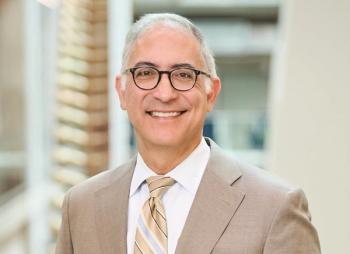
Hospital at home and health equity: Aiming to close disparities
The directors of home hospital programs say they offer new opportunities to improve patient care for all populations.
As more health systems are operating or planning hospital-at-home programs, leaders of some of those programs see the opportunity to improve health equity.
Since the beginning of the COVID-19 pandemic, the federal government has allowed health systems to provide treatment, including acute care, in patients’ homes, with certain conditions. Health systems involved with those programs say they are seeing encouraging clinical outcomes and the potential for financial benefits, including freeing up in-patient capacity for those who truly need to be in the hospital.
- Read more:
Hospital at home: A special report
But at a time when healthcare organizations are facing growing pressure to do more to close disparities in outcomes among underserved groups, some doctors say hospital-at-home programs could offer better care for patients in minority groups and those with lower incomes. More than 270 hospitals in 37 states are now providing acute care at home, according to
Mount Sinai began one of the nation’s first hospital-at-home programs and has been providing acute care in patients’ homes since 2015. Ania Wajnberg, an associate professor of medicine at the Icahn School of Medicine at Mount Sinai, says the program is serving patients of all backgrounds.
“For some reason, a perception got out there that is potentially for people who are well-resourced,” she says. “That is not our experience at all. I strongly believe this can be an improvement for health equity.”
Mount Sinai has offered hospital-at-home service to patients from a wide variety of socio-economic backgrounds, Wajnberg says. Many of those in Mount Sinai’s service area have lower incomes, she notes.
Wajnberg and other doctors and leaders of home-based hospital programs say they do have to make sure the patient can be safely treated in their residence, and that can be a challenge in some cases.
Homes need to have connectivity, but health systems typically can help patients who don’t have good WiFi. But some doctors also talked about dealing with other issues such as infestation, leaky windows, and even structural issues. Most of those involved say it’s rare, but in some instances, they must tell patients they can’t get acute care at home because it would not be safe in their residence.
Emily Downing, Allina Health System’s clinical officer of population health and home care services, says patients in minority groups have been very enthusiastic about getting care at home. Some members in minority communities don’t always see the hospital as a friendly environment, so patients are comforted by being in their own home with their loved ones and getting food they enjoy.
“This program allows us more ability to provide culturally responsive care in the environment where patients want to see care,” Downing says.
While some have voiced concerns that hospital-at-home may only be offered to more affluent patients, Downing says she has heard concerns from some “that this is somehow segregating.”
But Downing says Allina is hearing from patients saying that they prefer getting care at home and appreciate having the option.
“Being in their own environment gives them more control over their healthcare, which is what we all want for our patients,” she says.
“Our outcomes show it does provide the same level of quality but in a more culturally responsive way.”
With clinicians visiting patients in their home, Downing says, “It ends up being a boutique kind of experience for everyone.”
Those involved with hospital-at-home programs say they can get a window into other challenges patients are battling, such as food insecurity or other needs. Some of those needs wouldn’t be apparent simply by treating patients inside the hospital, and some patients may be too embarrassed to share those difficulties.
For patients in Mount Sinai’s program, Wajnberg says, “We work to provide any services they will need from meals to home care… depending on what we find as potential barriers.”
In a
The researchers wrote that hospital-at-home programs are “feasible for economically disadvantaged patients and that these patients may even have greater benefit.”
David Levine, clinical director, research & development of Mass General Brigham’s Healthcare @ Home program, says hospital-at-home programs are focused on closing disparities.
“I think considerations for health equity are paramount in home hospital care,” he says. “And our program, and I know many programs across the country, have taken this very seriously and put in real service offerings to make sure that health equity is top of mind, and being sure that we're able to treat all sorts of patients at home.”
Mass General Brigham has helped some patients dealing with problems in their residence, including pressing public housing agencies to make repairs, Levine says.
In addition, clinicians and leaders say the home hospital programs shed light on patient needs, including food insecurity.
“I think there's a real opportunity and responsibility to address some of the social determinants of health that we see when we're working closely with our patients in their homes," Levine said.








































